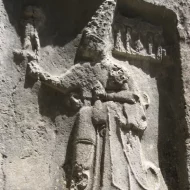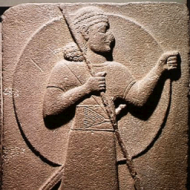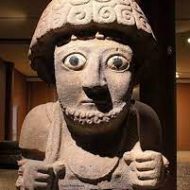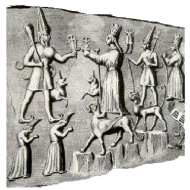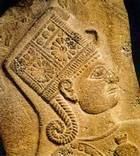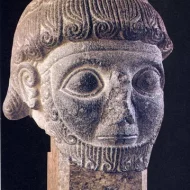Telipinu : The Agriculture God
Listen
At a glance
| Description | |
|---|---|
| Origin | Hittite Mythology |
| Classification | Gods |
| Family Members | Arinnitti (Mother), Tarhunna (Father), Hatepunha (Wife) |
| Region | Turkey, Syria |
| Associated With | Agriculture |
Telipinu
Introduction
Telipinu, also known as Talipinu or Talapinu, was an ancient Hittite deity whose role likely centered around agriculture, although some interpretations suggest he may have represented a storm god or the embodiment of crops.
In the Hittite culture, Telipinu received significant reverence through a grand festival held every nine years during the autumn season at Ḫanḫana and Kašḫa. This festival involved elaborate rituals, including the sacrifice of 1000 sheep and 50 oxen, as well as the symbolic replanting of an oak tree, which served as the god’s sacred emblem. Additionally, Telipinu played a crucial role in daily prayers for King Muršili II during his reign.
Physical Traits
An ancient Hittite legend known as the Telipinu Myth narrates the dire consequences of Telipinu’s vanishing act, which results in a complete collapse of fertility, affecting both flora and fauna¹. In this captivating narrative, Telipinu descends into a profound slumber, and lush vegetation thrives around him. This intriguing tale hints at the possibility that Telipinu might have been symbolically depicted as a figure intertwined with plant life or enveloped by a lush botanical environment. However, it’s essential to note that such interpretations remain speculative, lacking concrete evidence to substantiate them.
Family
Within their intricate mythology, Telipinu held the esteemed position of being the offspring of Tarḫunna (also known as Taru), the god of weather, and Arinniti, the radiant solar goddess. This divine lineage bestowed upon him a unique significance in the Hittite pantheon.
Telipinu’s marital connections were equally notable. His primary consort was the goddess Ḫatepuna, a partnership that symbolized the harmony between agricultural and natural forces in the Hittite belief system. However, the depth of his influence extended beyond a single union. At various sacred sites and cultic centers, Telipinu’s presence was intertwined with other goddesses, most notably Šepuru and Kataḫḫa. These varied pairings reflected the multifaceted aspects of Telipinu’s role, and the regional nuances in his worship added layers of complexity to his divine significance.
In essence, Telipinu’s mythological lineage, his connection to agriculture, and his associations with multiple goddesses showcased his versatile role within the Hittite pantheon, highlighting his importance as a deity of paramount importance in their religious and cultural practices.
Other names
Telipinu, also referred to as Talipinu or Talapinu, played a significant role in Hittite mythology as a deity closely associated with farming and agriculture. He earned the epithet of the “Exalted Son” and was represented in cuneiform as d Te (-e)-li-pí-nu (-ú)². Notably, Telipinu’s name was adopted by various Hittite kings, including one named Telipinu.
Interestingly, there are speculations that Telipinu may have persisted in later mythologies, potentially manifesting as the Greek figure Telephus and the Caucasian Telepia. However, it is important to note that these identifications remain uncertain.
Powers and Abilities
The myth revolves around the dire consequences that befell the Earth due to Telipinu’s wrathful departure, and the elaborate efforts made to placate him and secure his return. When the god of agriculture stormed away in anger, he did so in such a rush that he mistakenly put his right boot on his left foot and vice versa. This impulsive exit plunged both gods and humans into a state of devastation. Trees withered, fields and springs dried up, livestock and women ceased to reproduce, and famine gripped the world as Telipinu seemingly vanished into the realm of the deceased.
In a desperate attempt to find the missing deity, the sun god dispatched an eagle, but this avian search party proved futile. It was then that the mother goddess Hannahanna implored the weather god himself to embark on a quest to locate Telipinu. Upon breaking into Telipinu’s city and finding it empty, the weather god sat down in despair.
In a subsequent move, Hannahanna sent a bee on a mission to sting Telipinu, intending to awaken him from his slumber. The bee was instructed to smear him with wax and bring him back home. However, Telipinu’s reaction was far from expected, as his fury led to the creation of devastating floods that washed away homes, humans, and animals.
Only when Kamrusepas, the goddess associated with spells and possibly healing, performed a magical ceremony to soothe Telipinu’s anger did he relent and agree to return to his temple. He was transported back on the back of an eagle, whereupon he began to contemplate the welfare of the land. In a symbolic gesture, an evergreen was erected before Telipinu, and a fleece was hung from it, inside of which mutton fat, along with offerings of corn, wine, and oxen, were placed. This elaborate ritual served to restore harmony and fertility to the world, ending the desolation caused by Telipinu’s abrupt departure.
Modern Day Influence
There is not much in terms of modern day influence of Telipinu but some academics claim that the disappearance of the god and along with him all teh vegetation and prospects of agriculture could have contributed to the arid terrain of modern day Syria and most of the gulf.
Related Images
Frequently Asked Questions
What is lorem Ipsum?
I am text block. Click edit button to change this text. Lorem ipsum dolor sit amet, consectetur adipiscing elit. Ut elit tellus, luctus nec ullamcorper mattis, pulvinar dapibus leo.
What is lorem Ipsum?
I am text block. Click edit button to change this text. Lorem ipsum dolor sit amet, consectetur adipiscing elit. Ut elit tellus, luctus nec ullamcorper mattis, pulvinar dapibus leo.
What is lorem Ipsum?
I am text block. Click edit button to change this text. Lorem ipsum dolor sit amet, consectetur adipiscing elit. Ut elit tellus, luctus nec ullamcorper mattis, pulvinar dapibus leo.
What is lorem Ipsum?
I am text block. Click edit button to change this text. Lorem ipsum dolor sit amet, consectetur adipiscing elit. Ut elit tellus, luctus nec ullamcorper mattis, pulvinar dapibus leo.
What is lorem Ipsum?
I am text block. Click edit button to change this text. Lorem ipsum dolor sit amet, consectetur adipiscing elit. Ut elit tellus, luctus nec ullamcorper mattis, pulvinar dapibus leo.

